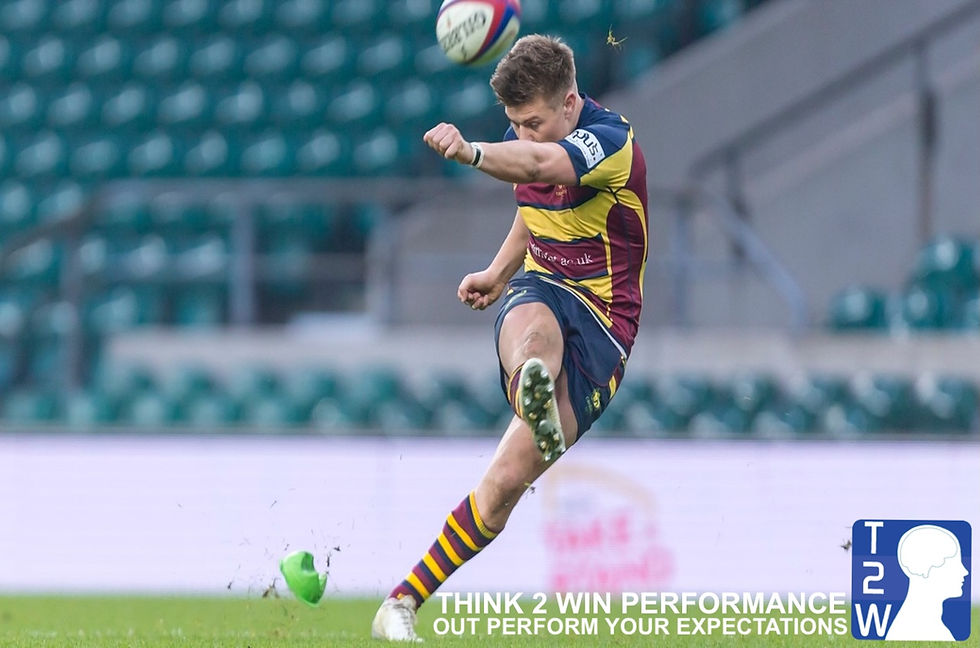From Sailing Boats to Rowing Boats: Lessons in Pressure, Precision, and Performing When It Counts
- Oliver Spensley-Corfield

- Jul 17
- 4 min read

High performance doesn’t always come from knowing a sport inside out. Sometimes, stepping into a new environment, with fresh eyes and open ears, sharpens your understanding of what pressure really feels like.
Recently, I traded sails for oars, spending time with Oxford Brookes University Boat Club at Henley Royal Regatta. While I’ve spent most of my life working in and around boats, rowing was unfamiliar territory. But what I found on the banks of the Thames offered some of the clearest, rawest lessons in performance psychology I’ve seen in a long time.
I’m no stranger to the water, but rowing isn’t a sport I’ve ever competed in; unless you count the hours I’ve endured on the rowing machine as part of S&C for sailing (usually under the glare of a stopwatch and the pressure of some “vitally important” fitness test). Still, I’ve felt flashes of the mindset it takes: the grit, the discipline, and the tolerance for discomfort that elite rowers embody every day.
At Henley, I spent three days embedded with the team; not running workshops or delivering sessions, just observing, supporting, and absorbing. In the early stages of working with a new group, sometimes the most powerful role you can play is simply being present and tuning into what matters to them.
And what hit me hardest (perhaps because I hadn’t thought it through properly), was just how fleeting and brutal the opportunity can be:
A 6–7 minute knockout sprint down a 2.1km course.
Win and you race again.
Lose — by a canvas, a bow ball, or a whisker — and your season ends right there.
That’s the deal at Henley Royal Regatta. A year of training, commitment, and sacrifice hinges on a single knockout performance. And the margin between staying in and going home can be as little as a fraction of a second. The same outcome whether you’ve travelled 15 miles from Oxford or flown 3,400 from Harvard.
It’s exhilarating. It’s unforgiving. And it creates a perfect storm for performance pressure.
“You only get one shot, one opportunity…” – Eminem
With a format like this, every race is your cup final. And therein lies the paradox: you need to give everything, but not too much. Go all-in today and you risk having nothing left for tomorrow. Misjudge your effort, and the thought of “what if I’d just pushed a little harder?” might haunt you for the next 12 months.
That razor-thin margin between pacing and pushing is where the real pressure lives.
And this is where leadership and situational awareness come into play, particularly from the cox. Their job is part tactician, part manager, part psychologist — reading the race, the crew, the opposition, and the moment.
It brought to mind Sir Clive Woodward’s concept of T-CUP (Very Henley Royal 🫖): Thinking Correctly Under Pressure.
We often talk about staying calm under pressure, but Woodward challenges us to go further. His idea is built on a simple truth: people aren’t born to perform under pressure. They need to be trained, deliberately, consistently, and with purpose.
T-CUP is about rehearsing decisions before they’re needed. It’s about role play under fatigue. Scenario planning under time pressure. Creating “war rooms” where athletes, leaders, and teams learn to expect the unexpected, and navigate it without flinching. It’s not just about remaining calm. It’s about knowing exactly what to do because you’ve already lived it in your mind.
You can’t deliver under pressure if you haven’t already thought it through under pressure.
“Under pressure, you don’t rise to the occasion — you sink to the level of your training.”
This isn’t just useful in sport. The business world , boardrooms, pitches, high-stakes presentations, operates under the same psychological demands. And yet, despite this, most of us still spend 90% of our prep on technical execution. The perfect rowing stroke. The ideal keynote script.
But when the environment changes, or the pressure peaks, it’s not the technical that saves you — it’s the mental agility, you’ve developed through deliberate, scenario-based rehearsal.
“Everyone has a plan until they get punched in the mouth.” Mike Tyson
That’s what I call pseudo-experience.
You may not be able to race Henley every day or relive your final over and over again.
But you can simulate the stress.
You can rehearse the pressure.
You can build the neural pathways that allow you to make decisions under fire. Enabling you to build the habits, strategies, and psychological resilience to handle situations better when they arrive. That means embedding mental rehearsals into your training. Developing clarity under uncertainty. Teaching individuals and teams not just to think clearly, but to think correctly — because they’ve seen it, felt it, and planned for it already.
This is where creativity meets preparation — not just in imagining possible scenarios, but in practicing how you’ll respond. In building a library of mental reps that you can draw on when it matters most.
Because in the end, it’s not just about what you know or how fast you are.
It’s about how well you’ve prepared your mind for moments that matter.
Whether you’re in a sailing boat, a rowing shell, or a leadership role, the principle holds true:
When the pressure’s on, it’s not just about what you know — it’s about what you’ve already mentally navigated.
And that, more often than not, is what sets high performers apart.
“experience is simply just the name we give our mistakes” Oscar Wilde





Comments